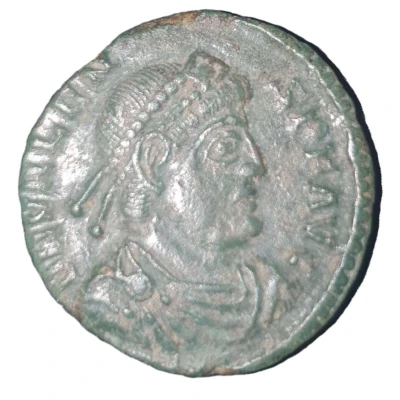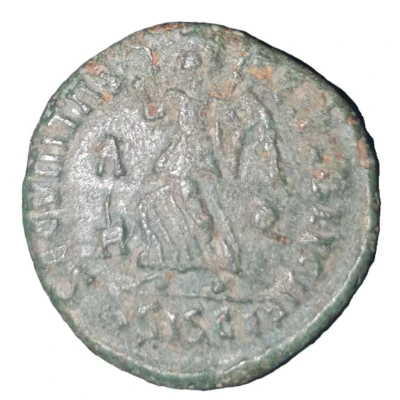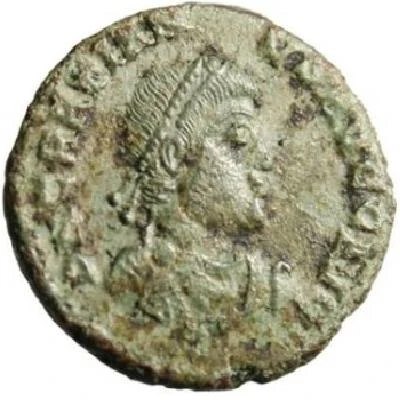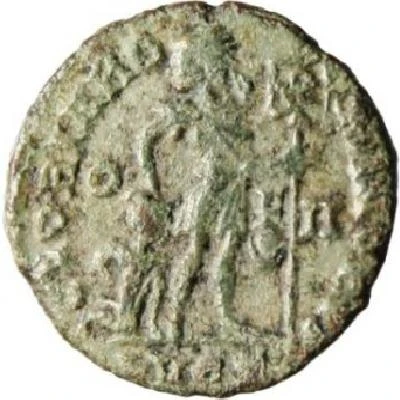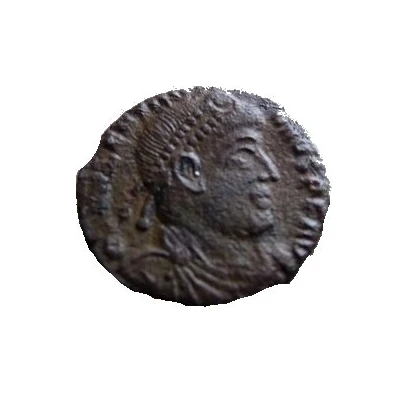
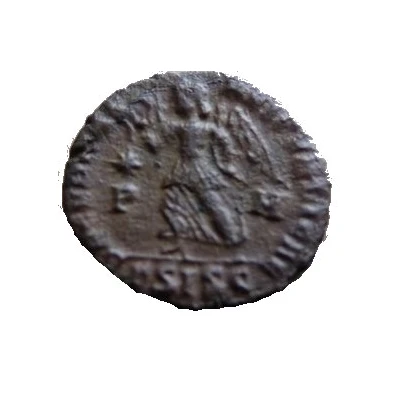

© Eyoly
Nummus - Gratianus SECVRITAS REIPVBLICAE; Siscia
| Bronze | 2.22 g | 17 mm |
| Issuer | Rome › Roman Empire (27 BC - 395 AD) |
|---|---|
| Emperor | Valentinian I (364-375) |
| Type | Standard circulation coin |
| Years | 367-375 |
| Value | Nummus (1⁄7200) |
| Currency | Solidus, Reform of Constantine (AD 310/324 – 395) |
| Composition | Bronze |
| Weight | 2.22 g |
| Diameter | 17 mm |
| Shape | Round (irregular) |
| Technique | Hammered |
| Orientation | Variable alignment ↺ |
| Demonetized | Yes |
| Updated | 2024-10-04 |
| Numista | N#62605 |
|---|---|
| Rarity index | 76% |
Reverse
Victory advancing left, holding wreath and palm.
Letters and symbols in fields.
Officina and mintmark in exergue.
Scripts: Latin, Greek
Lettering: SECVRITAS-REIPVBLICAE
Edge
Plain
Interesting fact
One interesting fact about the Nummus - Gratianus coin is that it features the first Christian symbol, the Chi-Rho monogram, on its reverse side. This symbol, which combines the first two letters of the Greek word for Christ (Chi and Rho), was used by Emperor Constantine the Great, who ruled alongside Gratianus, and became a popular symbol of Christianity in the Roman Empire.
